What’s Bugging You?
Since it is summer, and many of us are spending time outdoors, it is time we turn our attention to the things that can “getcha” and cause illness, that aren’t the Covid-19 virus
Overview
Insect-borne diseases are viral and bacterial illnesses that pass to humans either from insect (bug) bites or by the deposition of their feces/larvae on the skin. The most common insects that pass on disease are mosquitoes, ticks, sand flies, house flies, fleas and bedbugs. For example, mosquitoes are known for spreading the Zika virus, Yellow Fever, and Malaria. Ticks are known to spread Lyme disease and Rocky Mountain spotted fever.
Risk Factors
You increase your risk of being infected by an insect when you are in areas where they gather. This would include tall grass, bushes, spots near still water (ponds), and places around the globe with heavy outbreaks. It can also include your home and living spaces if you fail to clean and maintain them, especially in the case of fleas and bedbugs.
Many Known Culprits
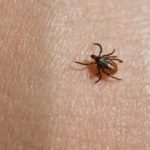
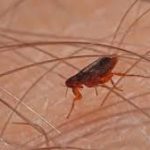
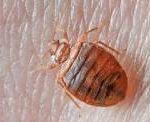
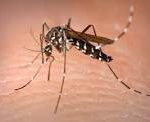
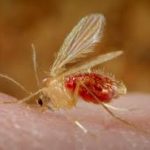






Mosquitoes
In North America, the most common mosquito-born diseases are:
- West Nile Virus
- Zika
- Dengue fever
- Malaria (rare in the US)
Their flight can be more or less noisy; their bite is not always painful. Half of all mosquito bites occur through clothing. Only the females bite – they draw blood from their victims in order to nourish their eggs. Male mosquitoes generally do not buzz and are completely harmless.

Ticks
In North America, the most common tick-borne diseases are:
- Lyme disease
- Meningoencephalitis
- Spotted Fevers
Tick bites result from contact with grassland. This risk is generally restricted to certain well-defined regions. Once the ticks are on the skin, they migrate towards the major skin folds (groin, armpits) where they implant themselves. They do not begin to feed until 12 to 24 hours have passed and so the risk of infection is low if they are quickly removed. It is best to use tweezers or some other precision implement to remove them rather than fingers – if the tick has begun to feed, avoid puncturing its body during removal.
Flies, Midges
In North America most fly-borne illnesses are from the common house fly, and are transmitted by some form of fecal contamination of food or water, either directly or indirectly, These include:
- Typhoid Fever
- Cholera
- Shigella
- E. coli
Bedbugs
A common bedbug-borne illness is also transmitted by the bug’s feces, not the bite. Bedbugs feed at night on their sleeping victims. A bedbug infestation can be incredibly difficult to remove: if you discover them in your home, prepare to discard your bed and bedding at a minimum, and you will likely need to fumigate your entire house.
- American Trypanosomiasis (Chagas’ Disease)
Fleas, Lice
Lice transmit different bacterial infections:
- bartonellosis (Trench fever),
- borrelliosis (relapsing fever)
- certain types of rickettsiosis
Rat fleas are a vector for:
- Plague
Symptoms of insect-borne diseases
Symptoms will vary depending upon the type of insect that has bitten you. Common symptoms of insect borne diseases can include:
- fever
- chills
- headache
- sore muscles
- skin rash
- nausea
- stomach pain
More serious symptoms can include:
- difficulty breathing
- the feeling that your throat is closing
- swelling of your lips, tongue, or face
- chest pain
- a racing heartbeat that lasts more than a few minutes
- dizziness
- vomiting
Diagnosis & Treatment

Initial Diagnosis
Your doctor can typically diagnose an insect-borne disease with a physical exam, a review of your symptoms, and a look at your recent travel destinations.
Advanced Diagnosis
Lab tests (blood and urine) can diagnose certain insect-borne diseases.
Initial Treatment = PREVENTION
There are many actions you can take to reduce the threat of being infected by an insect. You should:
- Stay out of tall grass and bushes.
- Dress in long pants, long sleeves, and a hat if you must be in tall grass and bushes. Tuck your pants into long, white socks.
- Wear light-colored clothing. This makes it easier to spot insects.
- Use bug spray that contains the ingredient DEET.
- Examine your skin and scalp when you get back in to check for bugs or bites. Always shower with plenty of soap after being in the outdoors. Ideally don’t go into areas known to be insect hotspots alone; you and your companion(s) can check each other for attached insects.
- Pay attention to outbreaks through the travel health notices posted by the Centers for Disease Control and Prevention (CDC). If you can, avoid travel to those places during outbreaks.
Advanced Treatment
Various treatments exist for these diseases
1. Medications (usually antibiotics, or in the case of malaria, antibiotics and quinine). These can be used for both treatment of active disease as well as prophylaxis when going into an endemic area
- Lyme Disease
- Spotted fevers
- Malaria
2. Symptomatic support – treating the fevers, rashes, and aches
- Meningoencephalitis
- Dengue fever
- West Nile virus
- Yellow Fever
3. Preventive Vaccines
- Meningoencephalitis
- Yellow fever
- Studies underway for Dengue fever and West Nile disease
So tell us YOUR story!
Ask questions!
Disclaimer: This is an informational post designed to foster discussion. It should not substitute for the advice of your doctor.
